The processional images will sometimes be of Our Lady being assumed into heaven, as most of you would probably expect. Here is an example from the village of Cantillana (province of Seville):
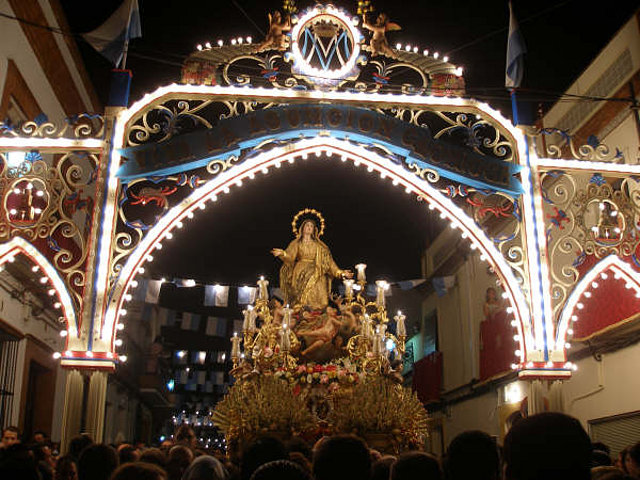
Sometimes, it will simply be the principal Marian images of the place, as happens in Seville, where it was the Patroness herself, Our Lady of the Kings (Virgen de los Reyes):
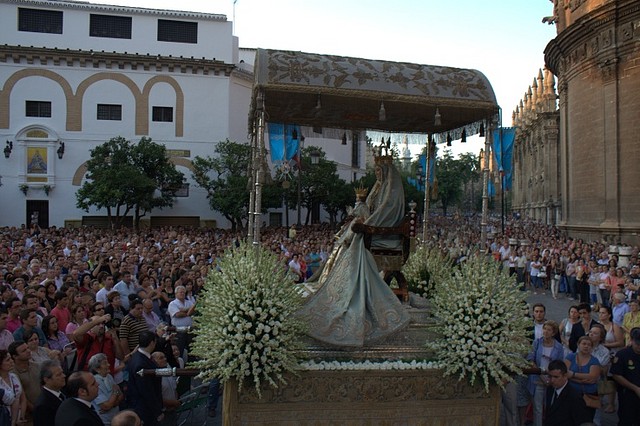

However, it is very common that the image will not show the actual Assumption, but the Dormition of Our Lady (Virgen or Asunta Dormida). The perhaps most famous example, at which I had the good fortune to be present once, is the procession of Our Lady of the Assumption (also simply called Virgen de Agosto) in Valencia, where the cathedral is dedicated to her:

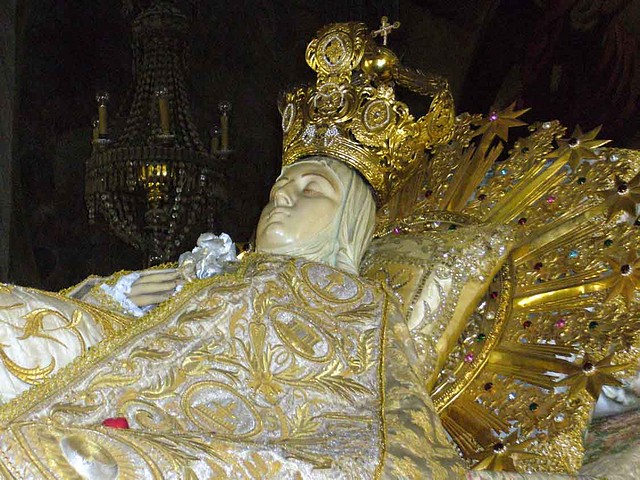
Here are two other examples of this type of image. The Virgen Dormida from the cathedral if Gerona:
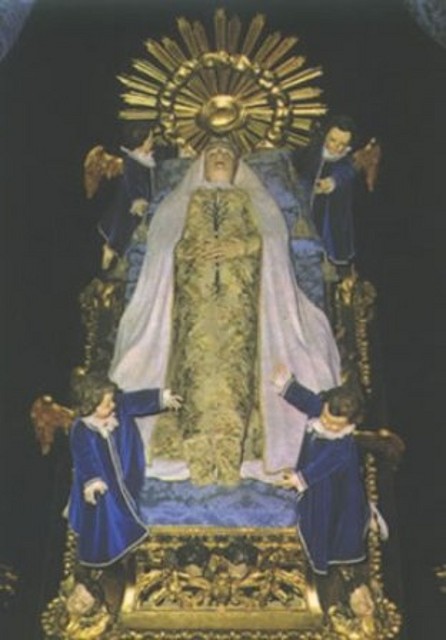
And Our Lady of the Passover (Nuestra Señora del Transito) from the Dominican church of Granada:

A very special tradition, which combines the various images, takes place in Elche (province of Alicante), the "Mystery of Elche" (Misterio de Elche), where the Assumption is represented in a mystery play which was specifically approved by Pope Urban VIII in 1632 and has since been declared a Masterpiece of the Oral and Intangible Heritage of Humanity by UNESCO.
It begins on the evening of 14 August. After First Vespers is sung in the Basilica of Elche, the Virgin expresses her wish to be reunited with her Son to the Marys:

The heavens open, and an apparatus (the so-called pomegranate) appears, on which an angel descends announcing to the Virgin her imminent death and handing her a palm:
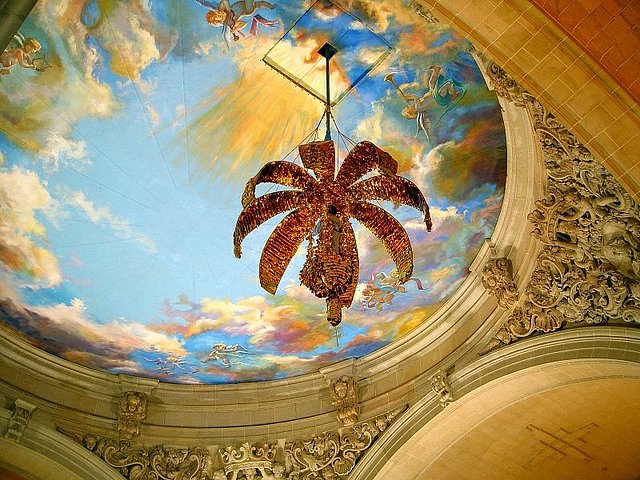

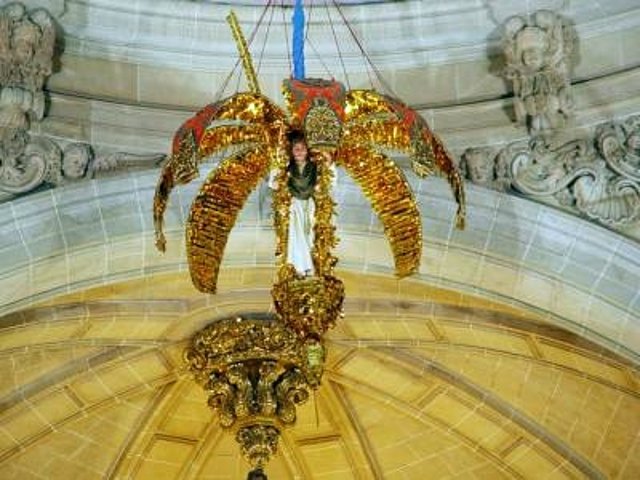
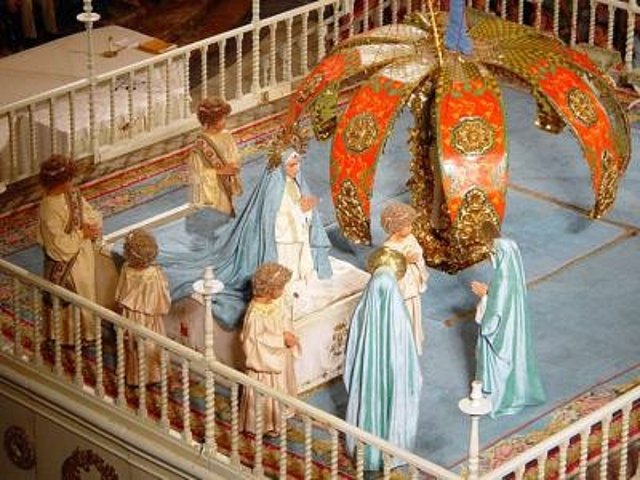
Then a second apparatus descends (the so-called araceli) with four singing angels and a bearer angel, who takes up to heaven the soul of Our Lady, signifying the separation of soul and body and thus the true death of the Virgin. The soul is represented by a miniature image of the large processional image of the Virgen Dormida we are about to see next:
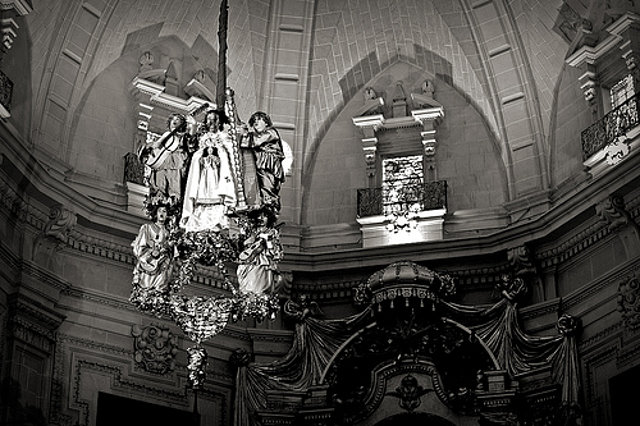
This ends the first part of the play.
On the morning of 15 August, there is the great procession with the image of the Virgen Dormida:


After Second Vespers, the second part of the play begins. The Apostles - in the first place St. John, to whom the palm was given which the Virgin received from the angel - venerate the body of the Virgin:

Then the funeral cortege takes place:
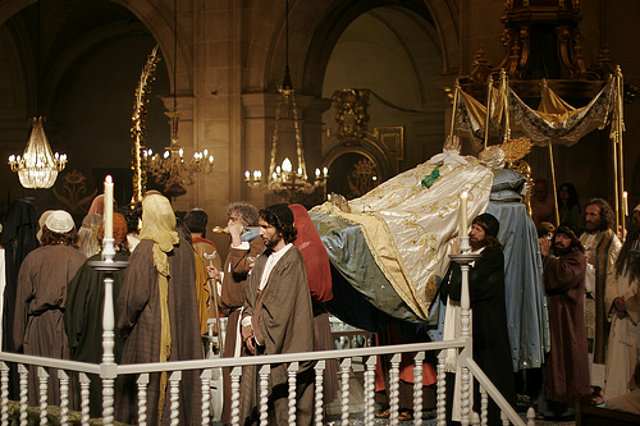
At the moment of burial, the heavens open again, and the araceli descends with the soul of Our Lady, which is reunited to the body, and then she is assumed body and soul into heavenly glory:
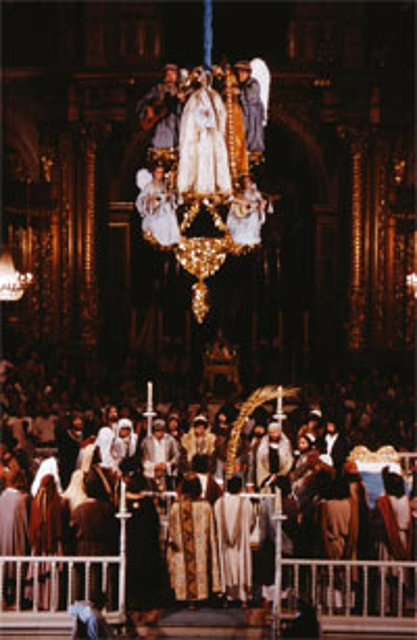
Half way up, the Most Holy Trinity comes to her encounter and crowns her, under the booming sound of the organ, the enthusiastic applause of the faithful, the ringing of the bells and the firing of salvos:

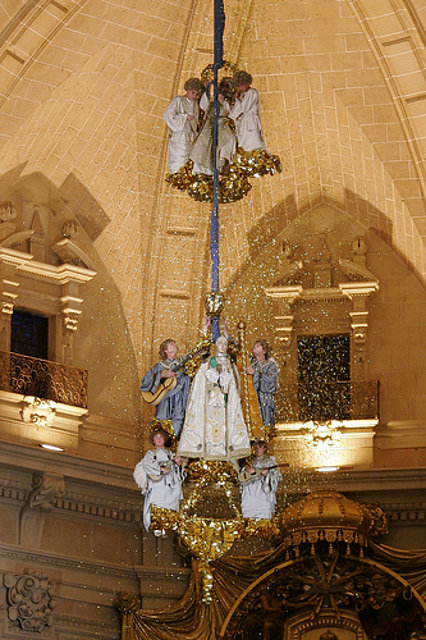
You can see some video footage here: